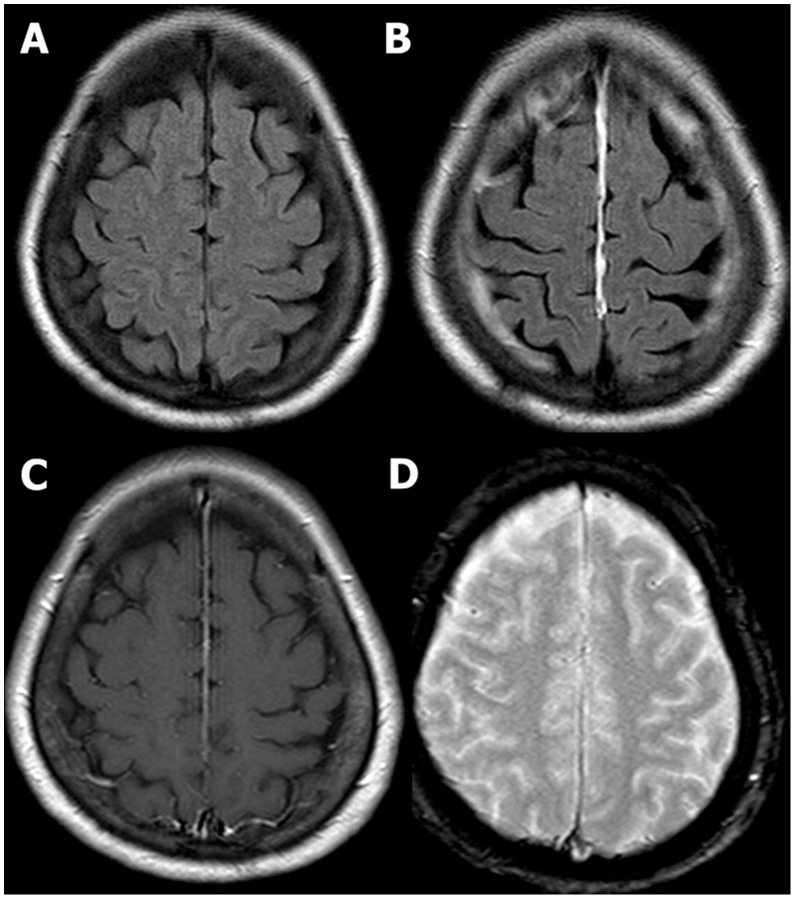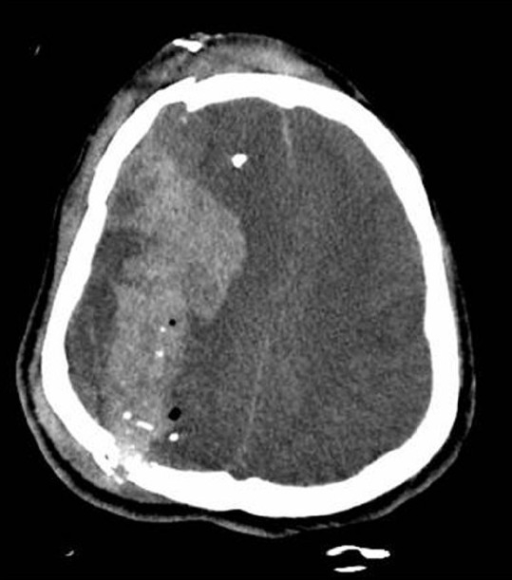Playlist
Show Playlist
Hide Playlist
Major Head Injury: Glasgow Coma Scale (GCS)
-
Emergency Medicine Head Injury.pdf
-
Download Lecture Overview
00:01 Hello. In this lecture, we’re gonna talk about major head injuries. 00:05 We’re gonna start off with a case scenario. 00:09 So we have a 31-year-old previously healthy man who presents to the Emergency Department after falling off of the roof of a three-story building. 00:16 He’s got blood covering his head and face. 00:20 He’s got an obvious compound femur fracture. 00:22 His eyes are closed and he has a large left-sided periorbital contusion. 00:27 When you perform sternal rub on him, he moans and thrashes around but he doesn’t actually speak. 00:35 He does pull his hand away when you press on his nail beds. 00:38 So how would you describe his neurologic exam? The Glasgow Coma Scale is the common language that’s used to describe neurologic status in patients with trauma. 00:52 It consists of three components. 00:53 The eyes, the speech and language, and the motor. 00:56 So for eyes, you have four different options. 00:59 You get one point if your eyes are closed, two if they open to pain, three if they open to voice, and four if they’re spontaneously open. 01:08 For speech and language, there’s a maximum of five points. 01:11 So the patient who doesn’t make any noise at all gets a one. 01:14 A patient who moans gets a two. 01:17 Patients are given a three when they’re able to say words but they’re nonsensical or repetitive. 01:22 For four, you should be generally conversant but perhaps, disoriented or slightly confused, and then a five is oriented appropriate just like you and I. 01:32 There are six potential points for motor. 01:35 So a patient with a one isn’t moving at all. 01:37 A patient with a two is extensor posturing so they are pushing their arms out to the sides. 01:45 Whereas a patient gets a three for flexor posturing or pulling their arms up towards themselves. 01:50 A four is withdrawal to pain meaning you pull away from a painful stimulus. 01:55 Whereas a five involves localizing pain. 01:58 Now, these two are a little bit tricky. 02:00 So to get a four, that means if I press on your nailbed, you pull your hand away from me. 02:06 That’s actually a spinal reflex. 02:07 It’s kind of the same as putting your hand on a hot stove. 02:10 If you feel the pain, you pull your hand away before the impulse even reaches your cerebral cortex. 02:16 By contrast, localizing pain requires you to move towards the painful stimulus in order to make it go away. 02:23 An example of that is you sternal rub the patient and they take their hand and try to pull your hand off of themselves. 02:29 That is a behavior that’s actually mediated through the cerebral cortex and indicates a better neurologic status. 02:36 And then, a patient gets full points if they are following commands and moving appropriately. 02:41 The Glasgow Coma Scale was described first in 1974 and it’s still widely used to this day. 02:47 It’s very helpful for quantifying the level of consciousness in patients with head trauma. 02:52 So a GCS of 13 to 15 is considered a mild injury, 9 to 12 is moderate, and 3 to 8 is severe. 02:59 There are some limitations to the GCS. 03:02 So in particular, there are non-trauma variables that can influence your GCS. 03:06 If you’re intoxicated, if you have dementia. 03:09 If you basically have any other condition that impairs your sensorium, that’s gonna reduce your GCS and make it difficult to tease out how much of the GCS depression is related to trauma versus how much of it is related to other causes. 03:25 There’s actually only moderate evidence that the GCS really predicts outcomes. 03:30 There is some evidence behind it but it’s not great. 03:33 GCS is definitely not perfect in the hands of real life practitioners. 03:38 So the interobserver reliability isn’t great and different doctors will assign different GCS’s to the same patient which means that it’s not exactly a reliable test. 03:48 And a really important thing to remember is it’s not actually useful outside of the trauma setting. 03:53 It was validated for use in traumatically injured patients and it’s less helpful for patients who have medical illness. 04:00 Several modifications to the Glasgow coma scale have been proposed for pediatric patients. 04:05 The most highly validated pediatric GCS suggests these modifications in the calculation of the coma scale for patients under two years of age. 04:14 So back to our patient, we said that his eyes were closed. 04:18 He was moaning and thrashing around in response to painful stimuli. 04:22 So he gets one for eyes, a two for speech and language, and then, he gets a four for motor because he did withdraw to pain but we were not able to get him to localize a painful stimulus. 04:33 So his GCS is seven which puts him in the severe head injury category. 04:37 Now, let’s review his vital signs. We’ve done his primary survey. 04:41 We’ve gotten him up on the monitor and this is what we have. 04:44 He’s tachycardic, he’s tachypneic, he’s hypotensive, and he’s borderline hypoxic with a sat of 94%. 04:51 What do you wanna do now?
About the Lecture
The lecture Major Head Injury: Glasgow Coma Scale (GCS) by Julianna Jung, MD, FACEP is from the course Trauma (Emergency Medicine).
Included Quiz Questions
What is the GCS score of a patient who opens his eyes to voice, moans, and withdraws to pain?
- 9
- 7
- 8
- 10
- 11
Which of the following statements regarding the Glasgow Coma Scale is INCORRECT?
- It is equally useful in both trauma and non-trauma settings.
- It is mainly used to quantify the level of consciousness in head trauma patients.
- A GCS score of 9 - 12 indicated moderate injury.
- One of its limitations is inter-observer reliability.
- Non-trauma variables, such as intoxication, might influence GSC.
What is the GCS score of a patient who was injured in a motor vehicular accident and noted to be flaccid, moaning, and only opening their eyes to pain?
- 5
- 6
- 4
- 3
- 7
Customer reviews
5,0 of 5 stars
| 5 Stars |
|
5 |
| 4 Stars |
|
0 |
| 3 Stars |
|
0 |
| 2 Stars |
|
0 |
| 1 Star |
|
0 |





